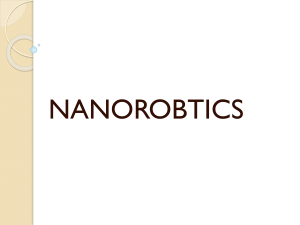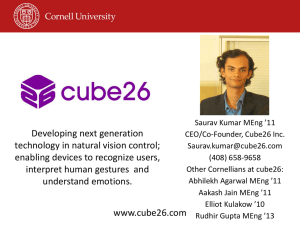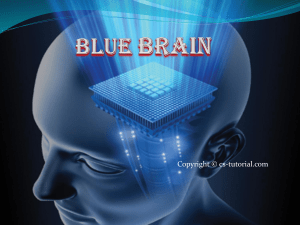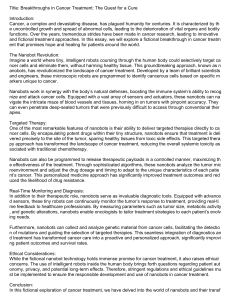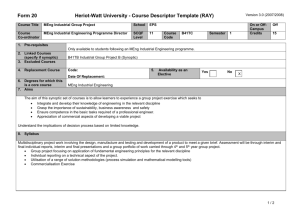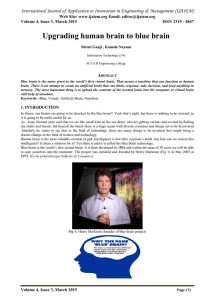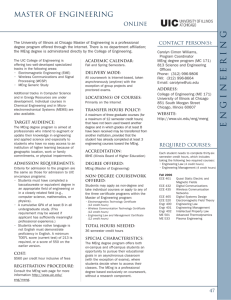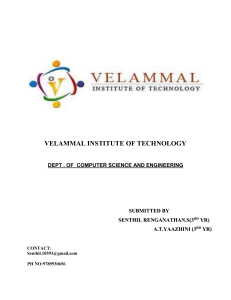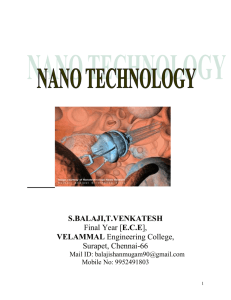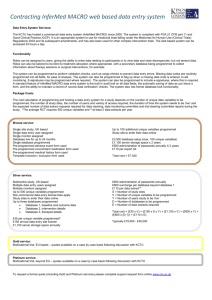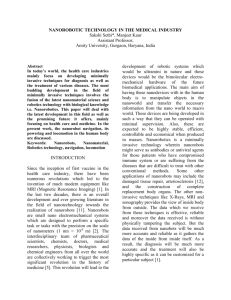Nanorobots
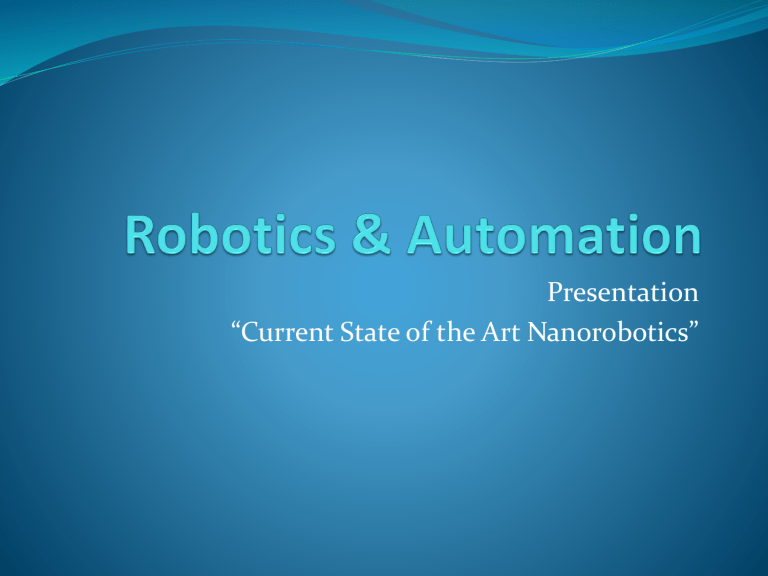
Presentation
“Current State of the Art Nanorobotics”
Who are we?
Ryan Oswald (4 th year MEng Software Engineering)
Andrew Sharp (4 th year MEng Computing &
Electronics)
Elliot Hunter (4 th year MEng Computing &
Electronics)
Topics of Discussion
Ryan - Military uses of Nanorobotic technology.
Elliot - Medical uses of Nanobots, Nano technology.
Andrew - Industrial uses of Nanorobotics.
Future Medical Applications
Drug Delivery – Targeted delivery system. 130 applications in progess
(2006)
Implantable Devices – Improvements to cochlear and retinal implants
Surgical Tools – Obtain previously unattainable levels of accuracy through programmed robots. Internal bloodless surgery a possibility
Genetic Testing – Much faster testing of underlying and genetic conditions.
Medical Application (cont.)
Hormones
Scientists are currently working on nanorobots that monitor and regulate the blood sugar levels of patients with diabetes by injecting insulin into the bloodstream automatically when required 1 .
However, nanorobots could also be programmed to traverse the human body and stimulate or inhibit hormone production in the endocrine system:
•
Leptin
increases the rate of metabolism; decreases one’s appetite.
•
Progesterone & Oestrogen
prevent ovulation.
Military Applications
As we have seen nanorobots could potentially be programmed to monitor and regulate the production of hormones within the human body. So why not apply this same theory in military applications?
R.O.
Soldiers could be injected with nanobots before entering the battlefield that could
“monitor the medical and stress status of a soldier, releasing therapeutic drugs, hormones, etc.” 2 :
•
Benzedrine
increases alertness; decreases fatigue;
•
Nootropics
increases cognition and motivation;
increases attention and concentration.
•
Adrenalin
control heart rate and breathing
• Vitamins, Minerals, Sugars and other nutrients…
6
Timeline: Where We Go Next
The future is certainly bright when it comes to medicine.
2008: Nano-agents for analysis inside cells
2013: Nanotools for manipulation inside cells
2015: Self-repairing in artificial systems
2018: In vitro construction of human organs
2021: Nanomachines inside the body
Cell Repair: Instead of surgery, which can only encourage healing.
Future? Nanobots will be able to repair our cells for us.
Industrial Applications
Chemical Engineering
Control Runaway Reactions
Oil spills
Break down hydrocarbons
Atmospheric Regeneration
Break down CO
2
Regenerate Ozone
8
Dangers
Ecophagy
“Grey Goo” Scenario
Human Health
Side Effects
Moral & Ethical
Use as a weapon
Over-reliance
9
Questions?
